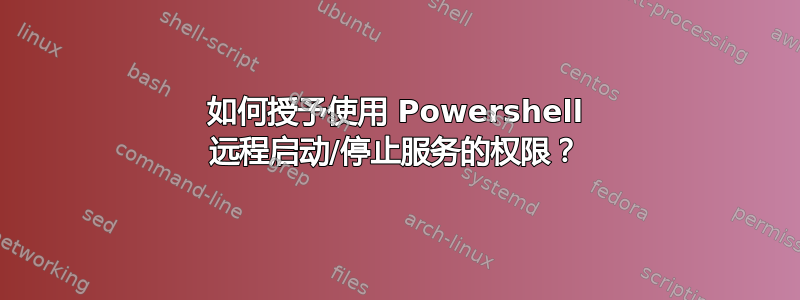
我们有一个 PowerShell 脚本,用于在另一台计算机上重新启动服务。当我们使用 PowerShell 的内置服务控制 cmdlet 时,如下所示:
$svc = Get-Service -Name MyService -ComputerName myservicehostname
Stop-Service -InputObject $svc
Start-Service -InputObject $svc
我们收到此错误:
停止服务:无法在计算机“myservicehostname”上打开 MyService 服务。
但是,当我们使用 sc.exe 时,如下所示:
C:\Windows\System32\sc \\myservicehostname stop MyService
C:\Windows\System32\sc \\myservicehostname start MyService
启动和停止成功。
执行重启的用户是不是管理员。我们使用 subinacl 授予用户启动/停止和查询服务的权限:
subinacl.exe /service MyService /GRANT=MyServiceControlUser=STO
为什么 PowerShell 无法停止我的服务但sc.exe可以?
答案1
事实证明我没有授予足够的权限subinacl. 授权操作可能的访问值为:
F : Full Control
R : Generic Read
W : Generic Write
X : Generic eXecute
or any following values
L : Read controL
Q : Query Service Configuration
S : Query Service Status
E : Enumerate Dependent Services
C : Service Change Configuration
T : Start Service
O : Stop Service
P : Pause/Continue Service
I : Interrogate Service
U : Service User-Defined Control Commands
我正在使用年代(查询服务状态),电视(启动服务),以及哦(停止服务)。 我还需要 E(枚举依赖服务)。 看起来 PowerShell cmdlet 在启动/停止时需要查看依赖服务。
这是我更新后的subinacl命令:
subinacl.exe /service MyService /GRANT=MyServiceControlUser=STOE
如果你不想下载/使用subinacl.exe,你可以通过 PowerShell碳模块的授予服务控制权限或者授予服务许可功能。(免责声明:我是 Carbon 项目的所有者/维护者。)
答案2
以下命令在我的 Windows Server 2008 R2 计算机上按预期工作。
Start-Service -InputObject $(Get-Service -Computer [ComputerName] -Name spooler)
您是否也可以尝试这个一次性命令来确定它是否有效,并且您是否已验证该用户是目标服务器上用户组的成员?


